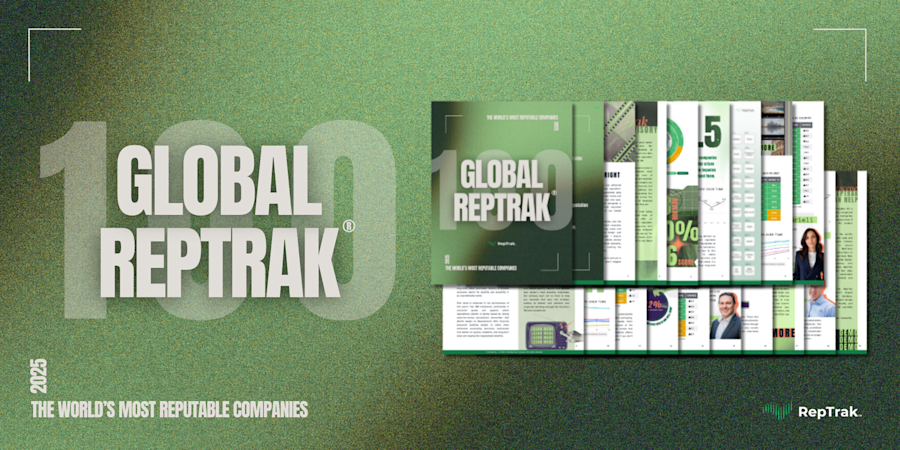Improving Your Corporate Reputation With ESG Communication
Blog Post22 Mar, 2021
During the coronavirus pandemic, many companies focused on their brands (i.e., their internally created images) and forgot to manage their corporate reputations (i.e., the public perception of their companies). What people think can make or break organizations, especially after a year defined by social and political unrest, a global health crisis, and a shift in the business world.
As a business communication professional, you can improve your company’s corporate reputation. After all, communication is the key to connecting with the public and boosting people’s opinions of your company. But where and how do you start? About 96% of people don’t trust advertising, and you don’t want to come across as boastful, tone-deaf, or unaware.
That’s where environmental, social, and corporate governance comes in. ESG drives purchase behavior; people want to buy and interact with companies that care about the environment, prioritize diversity and inclusion, and treat their employees well, among other things. If you can incorporate ESG into your communications strategy, then you’ll be able to manage your corporate reputation — not just your brand.
Why ESG Is Important to Audience Interactions
Last year changed life as people knew it, so you might think they’d turn to companies for guidance and support. What we discovered, however, was that fewer people interacted with companies after June 2020. Only 64% interacted with companies from July through November, which was down from about 70% between April and June.
More than 75% of people want companies to talk about what they’re doing to help (an element of ESG), so why are interactions dropping? The reality is that the public isn’t connecting with the way companies currently communicate this information. If you want to flip the script and figure out how to resonate with audiences, you’ll need to adjust your strategy to meet people’s evolving expectations.
Right now, people care about others’ well-being. We found that the public wants to hear about how companies support their employees, help communities during COVID-19, and prioritize workplace safety. Your corporate reputation depends on what people think about you, so you’ll want to boost interactions through effective business communication about ESG.
The Importance of ESG Communication
Unfortunately, many companies with ESG initiatives have poor corporate reputations because they fail to communicate their efforts to the public. This misalignment results in a gap between perception and reality. By bridging the gap through ESG communication, you can help your company appear more trustworthy and improve your corporate reputation.
If your company’s ESG efforts haven’t gained much traction with the public, look at your communication strategy. Did you alert traditional media about your company’s green project? Have you posted about your charity drive on social media? Making a concentrated effort to talk about ESG will help people see what your company is doing to give back.
Don’t let concerns about superficiality hold you back. Think about it this way: You wouldn’t miss the opportunity to tell people about a sale, so why would you miss the chance to show the good your company has been doing? As long as your efforts and communications are genuine, people will think you’re authentic rather than self-promotional.
Tailoring Your ESG Communication Strategy
It’s important to talk about your ESG efforts, but every demographic reacts differently to ESG initiatives. Your mission is to figure out how to communicate your ESG efforts to your specific audience. To help, our data science team conducted a global ESG sentiment analysis to discover how much each demographic cares about “E,” “S,” and “G.”
We found that Millennials care three times more about ESG than other generations. In fact, 90% of Millennials want to invest in companies that share their values. When it comes to gender, women care significantly more about ESG than men and the general public. By showing these audiences what your company is doing to make the world a better place, you can increase their perceptions of your company.
It’s important to note that all of the demographics we evaluated cared less about “E” than “S or “G.” This is surprising when you consider that companies spent $128.5 billion on sustainable products in 2018. Environmental concerns might have been top of mind in the past, but current data indicates that the public sentiment is changing. This illustrates why you need to gauge your audience before developing your ESG communication strategy.
ESG Communication Best Practices
Now that you know how vital ESG is to your corporate reputation, you can plan to connect with audiences via your ESG communication. Here are a few ways to maximize your strategy and improve the public perception of your company:
1. Own the narrative.
Your company’s ESG efforts are part of its overall business story. Some parts of the narrative might be thrilling and remarkable, but your company might also run into complications. Talk about both your wins and losses so that your ESG story is comprehensive and transparent.
2. Communicate consistently.
If you want to inspire trust in your company, stay in constant communication with external stakeholders. Regularly talk about what’s going on with your company and its ESG initiatives. According to our research, consistent communication can improve a company’s benefit-of-the-doubt scores. A higher score indicates that the public will likely support your company — even during tough times.
3. Communicate internally, too.
Successful ESG initiatives hinge on employee buy-in. Talk with different departments and teams to gauge whether everyone is on the same page. Make sure everyone knows that ESG is not only a company effort but also an individual responsibility. By keeping everyone in the loop, you can help leaders achieve companywide involvement.
4. Be honest and compassionate.
Although ESG initiatives have real business benefits, your communication doesn’t have to sound commercial or opportunistic — and that kind of tone won’t sit well with the public. Instead, focus on the heart behind your company’s efforts. Talk about ESG in a way that encourages others to get involved and share your message.
5. Let your CEO do the talking.
In today’s business landscape, people expect leaders to guide their companies and be the voices of their brands. This is especially true when it comes to ESG. By making your CEO the spokesperson, you can meet people’s expectations, improve public relations, and streamline your ESG messaging.
6. Explore traditional earned media.
Earned media is expensive, but it’s more credible than owned media. Why? It generates authentic buzz about your company’s ESG efforts. Our research suggests a bigger positive impact on a company’s corporate reputation when people learn about company decisions through these types of placements.
7. Foster engagement via email.
It’s easy enough to send a quick, educational email about your company’s ESG initiatives, but your outreach should go a step further. Try getting people more involved by including a poll or questionnaire about specific efforts. This will help audiences see what your company is doing and provide you with valuable insights for the future.
8. Showcase ESG efforts via video.
Create fun video content to showcase your company’s ESG initiatives. For instance, you could put together content about your company’s work with a particular charity. You could also film documentary-style interviews with employees about the company’s goal of improving its culture. The possibilities are limitless.
9. Leverage social media.
Social media channels are a great place to spread the word about your company’s ESG projects. More than 70% of marketers believe their social media efforts have been “somewhat” or “very” effective. And when employees share company content on their personal accounts, it can significantly increase the reach of your ESG communication.
10. Centralize your ESG content.
Try pulling together all of your press releases, videos, earned media links, and other ESG content in one place on your website (such as a resources page). This will help stakeholders quickly find and learn about your ESG efforts.
For more information about the importance of ESG communication, check out our whitepaper, “ESG By Numbers.”
You can also click here to request a free RepTrak demo.





